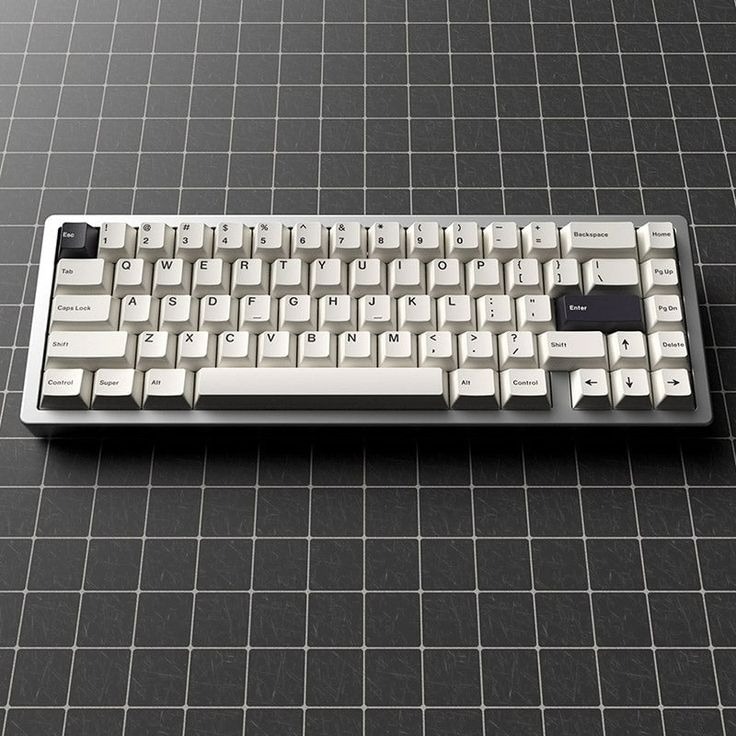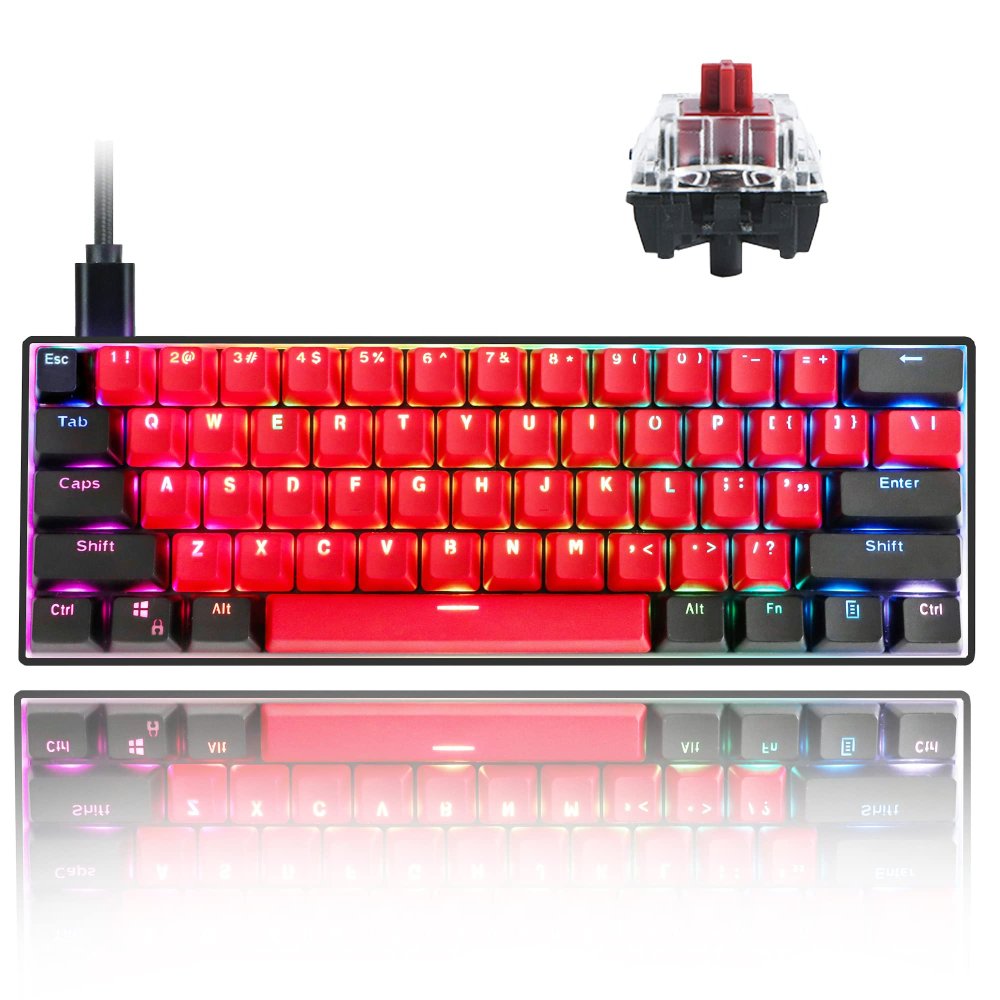Introduction to Keyboard Sizes
When considering a new keyboard, size matters. Keyboards come in various sizes, each fitting different needs. From full-size models to compact versions, keyboard sizes can greatly impact user experience. They affect comfort, functionality, and portability. Picking the right keyboard size is crucial for productivity and ergonomic health.
Your choice can depend on desk space, hand size, and the tasks at hand. For gamers, a certain keyboard size might give that competitive edge. For writers, a different size could mean comfort during long typing sessions. Even travelers may seek out the perfect portable keyboard that doesn’t sacrifice usability. In this guide, we delve into the different keyboard sizes and help you make an informed choice.
Before diving into specifics, let’s understand the actual differences between keyboard sizes. ‘Full-size’ doesn’t just mean big. It refers to a standard keyboard layout with a numeric keypad. As we scale down, each keyboard size percentage represents the number of keys in comparison to a full-size model. Understanding these differences is key when you’re on the lookout for a new keyboard. Stick with us as we navigate through the world of keyboard sizes and find the best fit for your typing style and lifestyle.

Factors to Consider When Selecting Keyboard Size
When choosing a keyboard size, ponder a few vital elements:
- Desk Space: Measure your work area. A large desk might fit a full-size keyboard, while a smaller one may call for a compact option.
- Hand Size and Typing Habits: If you have larger hands, you may find a full-size or TKL keyboard comfortable. Others could prefer smaller keyboards to reduce the distance between keys.
- Number of Keys Needed: Determine your key usage. Full-size keyboards come with function, navigation, and numeric keys. Less can mean more with fewer keys for some users.
- Portability Concerns: Frequent movers or travelers might benefit from a keyboard that’s easy to carry. In this case, smaller keyboard sizes are advantageous.
- Aesthetic Preference: Your keyboard’s look can influence your choice. Some prioritize minimalism and sleek design over functionality.
Remember these factors as a basis to navigate through the seas of keyboard sizes and pinpoint the ideal match for your needs. Choose wisely, as the right keyboard size can enhance productivity and comfort.
Different Types of Keyboard Sizes
When it comes to keyboard sizes, there’s a spectrum to choose from. Let’s explore the most common types.
Full-Size Keyboards
Full-size keyboards are what you typically find on office desks. They come complete with a numeric keypad, function row, navigation keys, and the standard QWERTY layout. Ideal for those who need the extra keys for data entry or finance tasks.
Tenkeyless (TKL) Keyboards
Tenkeyless keyboards do away with the numeric keypad. This design frees up desk space while maintaining most other keys. It’s perfect for gamers and users who scarcely use the numeric keys but still want easy access to the function and navigation keys.
75% Keyboards
75% keyboards strike a balance. They retain the function row but compact the navigation keys. They offer a tighter layout, which might suit users who enjoy a compact feel without losing key functionality.
60% Keyboards
60% keyboards shrink things down even further. They omit the function and navigation keys, offering a minimalist design. This size is a favorite among writers and coders who prioritize a small footprint and portability.
40% Keyboards
The smallest of the main keyboard sizes, 40% keyboards, focus on the essential keys. They’re best for those who value extreme portability and have adapted to a more layers-based key use. It’s quite the adjustment, but for the right user, it’s a game-changer.
Matching keyboard sizes to your specific needs will make a significant impact on your overall computer-using experience. Each size category has a unique set of benefits, and knowing which one aligns with your usage patterns is crucial. Keep the previously mentioned factors in mind as you consider these options.

The Impact of Keyboard Size on Ergonomics
Choosing the correct keyboard size isn’t only about space or functionality; it also has a direct link to ergonomics. Ergonomics is all about designing and arranging things people use so that the users and the things they do interact most efficiently and safely. In this case, it’s about ensuring your keyboard promotes a comfortable, natural typing position to prevent strain and injury.
Key elements include the position of your wrists, your arm angle, and the reach required to type certain keys. For instance, a full-size keyboard can cause you to overextend your reach for the mouse, leading to strain. In contrast, a smaller keyboard, such as a 60% or 75% model, positions the mouse closer to the keyboard, which can reduce shoulder and wrist strain.
For those with smaller hands, picking a compact keyboard size prevents overstretching the fingers and maintains a more natural wrist alignment. Meanwhile, individuals with larger hands may find that a tenkeyless (TKL) or, at times, a full-size board allows for a more spacious layout, avoiding cramping.
It’s crucial to keep in mind that a mismatched keyboard size can lead to repetitive strain injuries (RSIs). Symptoms of RSIs include pain, weakness, and numbness, which arise from prolonged strain on muscles and tendons. The right keyboard size can decrease the risk of developing these conditions by promoting a more relaxed posture and less awkward hand movements.
Ultimately, when considering ergonomic health, think of how your keyboard will affect your body’s position throughout the workday. Pairing a suitable keyboard size with other ergonomic practices, such as using adjustable chairs, monitor stands, and wrist rests, can further enhance your comfort and productivity.
Keyboard Size Recommendations for Different Use-Cases
The perfect keyboard size can differ based on specific activities. Let’s look at various use-cases and recommendations on which keyboard sizes may suit them best.
Gaming
For gamers, speed and comfort are crucial. A Tenkeyless (TKL) keyboard is often the prime choice. It offers ample key access while freeing up space to move the mouse swiftly. The compact design allows for faster reactions and more comfortable hand movements during long gaming sessions.
Typing and Office Work
If your work involves a lot of typing, such as writing or data entry, consider your comfort over long periods. Full-size keyboards with a numeric keypad can be a boon for productivity in data-intensive tasks. However, for pure typing, a 75% keyboard might offer comfort, giving you essential keys with a smaller footprint.
Travel and Portability
For those often on the move, a 60% or 40% keyboard may be ideal. Their compact and lightweight design makes them easy to slip into a bag. They strike a balance between functionality and portability, ensuring you can work efficiently even from tight spaces such as airplane trays or cafe tables.
By aligning keyboard sizes with your primary activities, you can enhance both comfort and performance in your daily tasks.

Tips for Testing and Choosing Keyboard Sizes
Once you understand the different keyboard sizes, how do you decide which is right for you? Testing is essential. Here are practical tips to help you choose the perfect keyboard size.
- Visit a local electronics store: Hands-on experience is invaluable. Try typing on different keyboard sizes to feel what’s most comfortable for you.
- Check key placement: Pay attention to how easily you can reach all the keys. This will affect your typing speed and comfort.
- Assess your desk setup: Bring measurements of your workspace. Ensure the keyboard size you choose will fit well without crowding.
- Consider your typing workload: Reflect on how much typing you do daily. A larger keyboard might benefit heavy typers with its additional keys.
- Notice wrist and hand position: While testing, keep an eye on your wrist alignment. Your hands should not feel strained.
- Ask for recommendations: Talk to friends or colleagues. Learn from their experiences with different keyboard sizes.
- Read reviews: Look for online reviews of various keyboard sizes. User experiences can guide your decision process.
- Don’t rush your choice: Take your time to make an informed decision. A keyboard is an investment in your ergonomic health and productivity.
- Test in your typical environment: If possible, try the keyboard in the setting where you will use it the most. This could be at home, at the office, or while traveling.
Remember, the right keyboard size will depend on your personal needs and preferences. Through testing and consideration, you can find the ideal balance between comfort, functionality, and space efficiency for your typing experience.
Conclusion and Final Thoughts on Keyboard Size Decision
Choosing the right keyboard size is a meaningful decision that shapes your computing experience. It affects your comfort, efficiency, and ergonomic well-being. Whether you’re gaming, typing for hours, or needing something portable, there’s a keyboard size out there that’s tailored for your needs. Full-size keyboards cater to those who can’t forgo the numeric keypad and need all the functions at their fingertips. Tenkeyless models blend the benefit of extra desk space with the access to crucial keys.
For a balance of compactness and functionality, 75% keyboards offer a sweet spot. Meanwhile, 60% and 40% keyboards embody minimalism and portability, perfect for on-the-go typing or small workstations. Remember, ergonomics can’t be overlooked. Proper wrist alignment and a comfortable typing position are non-negotiable for long-term health and productivity.
Before making a final choice, revisit the factors discussed earlier. Think about your desk size, hand dimensions, and the variety of keys you really need. And don’t skip the testing phase; feeling the keyboards can provide critical insights into what works best for you. Reviews from other users can also be incredibly helpful.
In conclusion, the ideal keyboard size isn’t a one-size-fits-all answer. It’s a personalized decision that requires careful thought and testing. Your perfect match will promote an ergonomic setup, fit your specific use-case, and integrate seamlessly into your life. Invest time in this choice, and your hands—and work—will thank you.